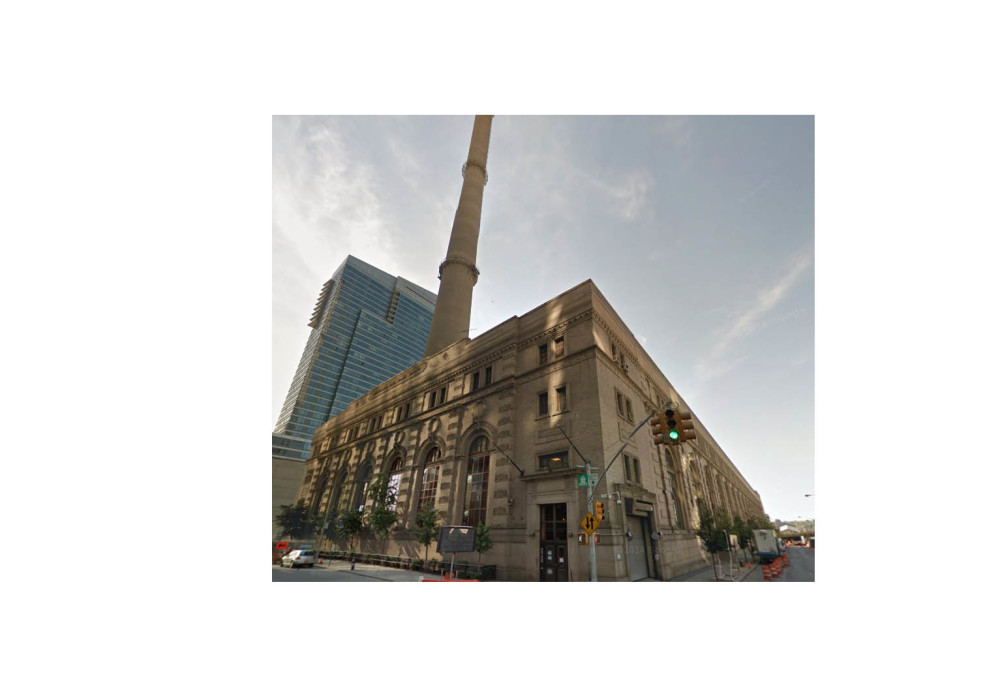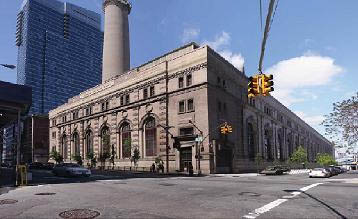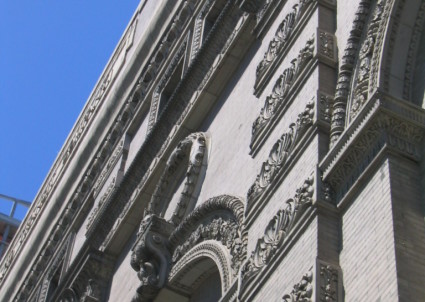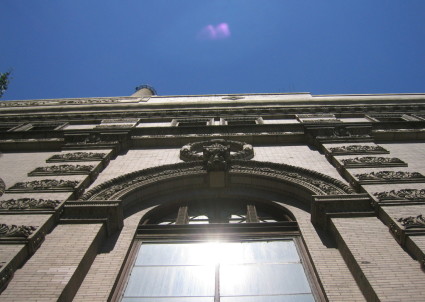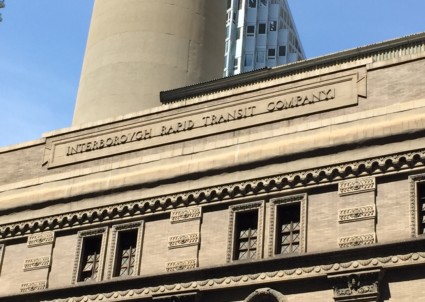IRT Powerhouse, Manhattan
Address: West 58th & 59th Streets, 11th & 12th Avenues
Architect: Stanford White
Constructed: 1904
LPC Action: Public Hearings in 1979, 1990, and July 14, 2009
LPC Backlog Hearing: Prioritized for designation
LPC- Fact Sheet | Research File
Stanford White was able to design in 1904 what today seems like a minor miracle: a highly elegant and ornate utilitarian structure. It was all in a day’s work for White and other City Beautiful proponents who believed that public improvements should be built to create a city that is both functional and beautiful. This monumental structure is a remarkable example of Beaux-Arts design applied to a utilitarian building; its architectural grandeur meant to convince the public to embrace the subway, a major new mode of transportation in 1904. Designed as a showpiece, it now stands as a monument to progress and rapid transit. In addition to its architecture, the building holds an important place in industrial history. When it opened, it was the largest powerhouse in the world and provided the energy needed to run the first subway line along Manhattan’s west side, which in turn created and enabled the modern city of New York. Despite the unfortunate loss of its original smokestacks, the IRT Powerhouse remains a commanding presence and a dynamic anchor for an ever-changing west side.
LPC Statement of Significance:
Occupying the entire block bounded by Eleventh and Twelve Avenues, West 58th and 59th Streets, the original powerhouse of the Interborough Rapid Transit Subway is the most monumental building associated with the subway system in New York City. This mammoth structure was the largest powerhouse in the world upon its completion in 1904, and it represented the highest level of technical sophistication in the production of electrical power at that time. From the powerhouse, current was generated and fed to eight substations to power the signal and lighting systems. In its role as company symbol, the building heralded a new era of electrified urban transportation, illustrating the power of technology to improve urban life. The IRT Powerhouse still stands as a monument to the engineers and architects who planned and built New York City's first successful underground transit system.
The exterior of the powerhouse was designed by Stanford White of the prominent firm of McKim, Mead and White and is a rare example of utilitarian design by that firm. Executed in the Beaux-Arts style and drawing upon Renaissance prototypes, it is the embodiment of the aesthetic ideals of the civic-minded City Beautiful movement, spawned by World's Columbian Exposition of 1893 in Chicago, which held that public improvements could beautify American industrial cities. The structural design of the powerhouse was the responsibility of William C. Phelps, assistant engineer in charge of the Mechanical Department of the Subway Construction Company.
Standing on a base of smooth ashlar granite, the building has symmetrically designed facades of buff-colored brick arranged in bays with two-story arched window openings that are decorated with terra-cotta moldings and keystones. The arcades are surmounted by an attic story with paired window openings framed by terra-cotta moldings and keystones. The six windows of the Eleventh Avenue facade are separated by brick pilasters with foliated terra-cotta rustication blocks and topped by terra-cotta wreaths. At the long north and south facades, pairs of rusticated brick pilasters separate the arched bays. Many of the windows retain their original multipane industrial sash. It is unclear whether any of the original six chimneys--which were erected on a steel substructure 76 feet about the basement floor of the powerhouse in order to maximize floor space--remain, and a new, much taller chimney has been added near the southeast corner. The original terra-cotta roof tiles and the upper cornice have also been removed. Four openings have been cut into the base on the south side and one on the north side, and three of the window openings have been partially bricked in (two on the south side, one on the north). An addition was constructed in the 1940s at the Twelfth Avenue facade of the powerhouse, which IRT engineers had purposefully left vacant for such an expansion to the plant. This extension was not included in the proposed designation in 1990.
